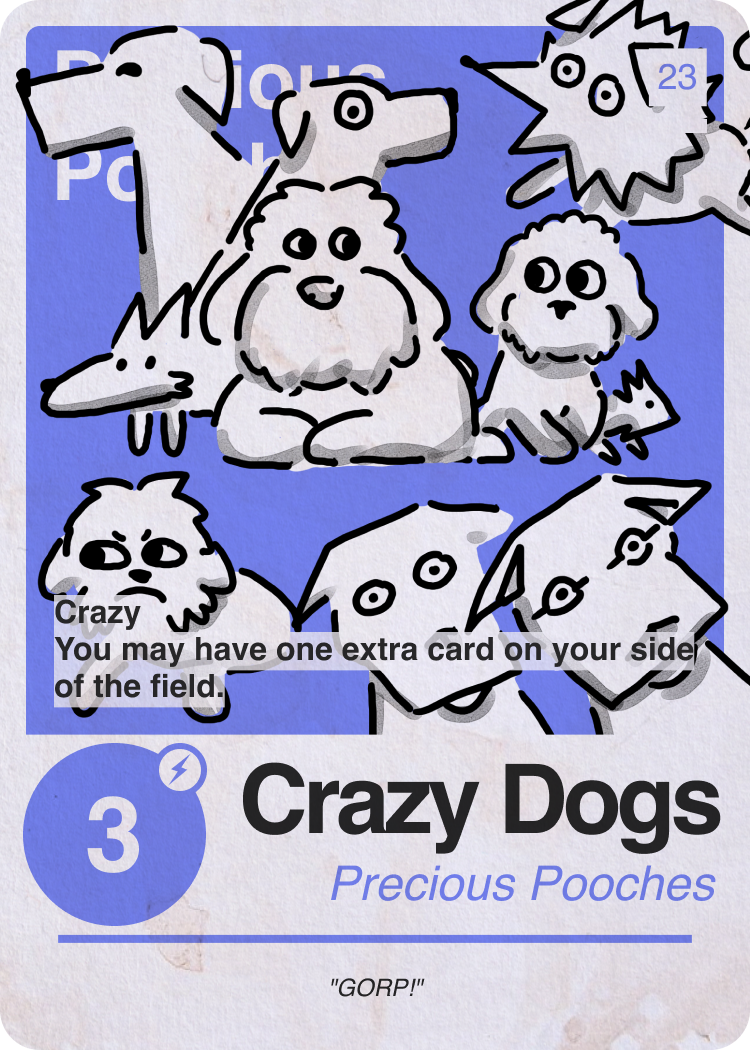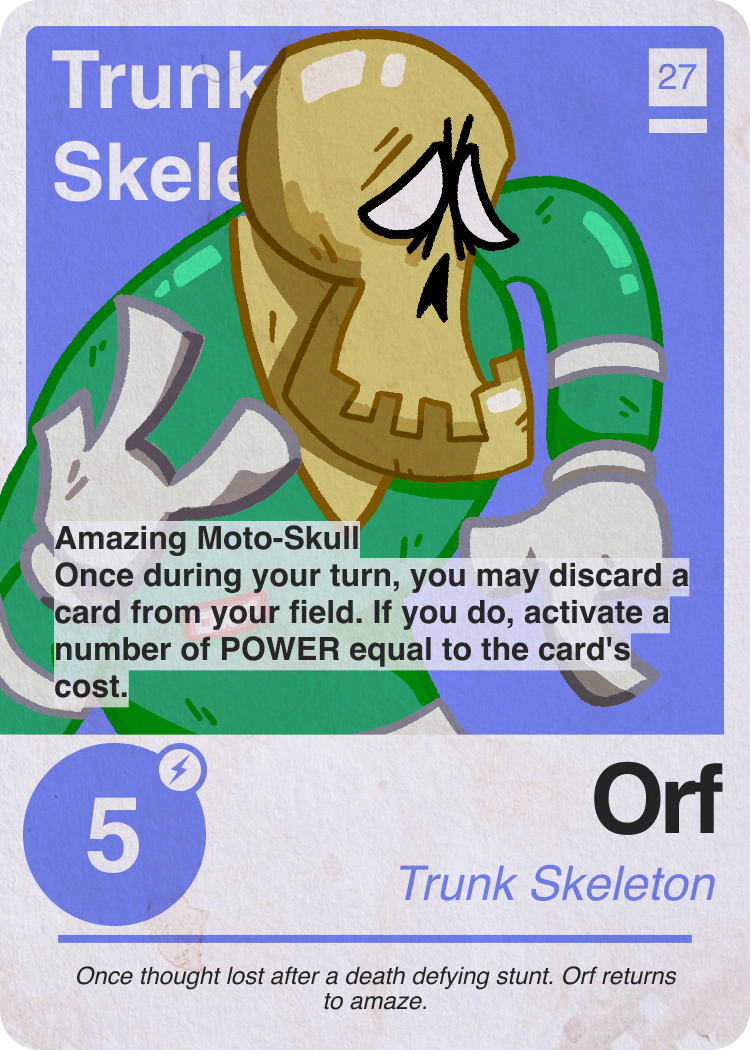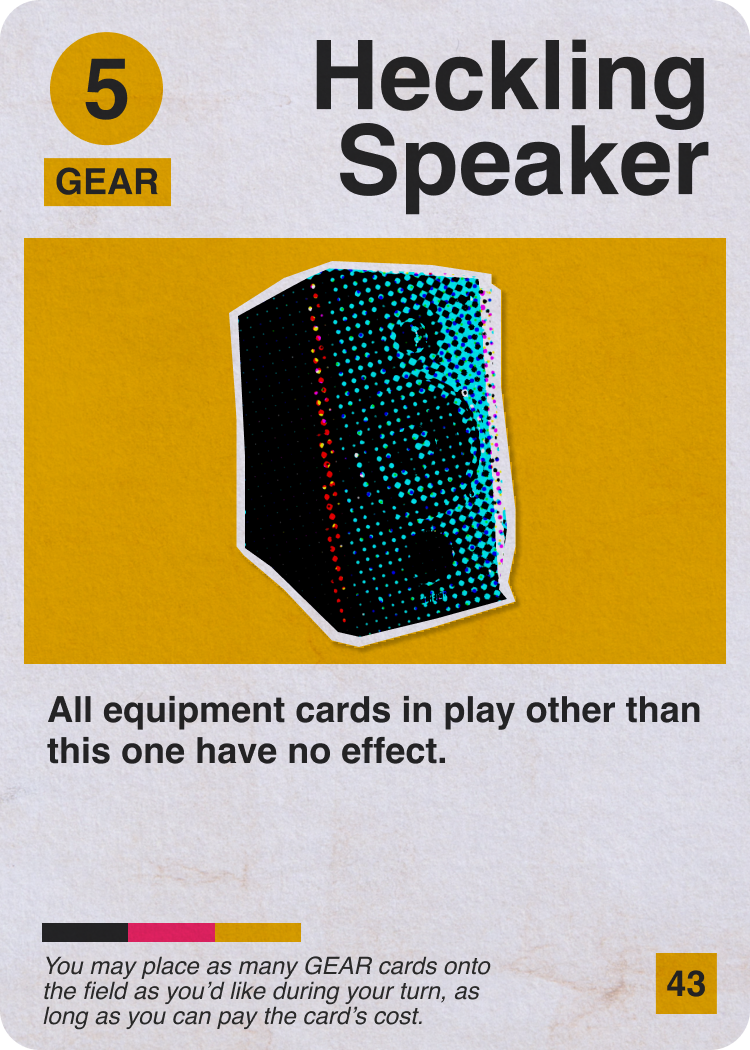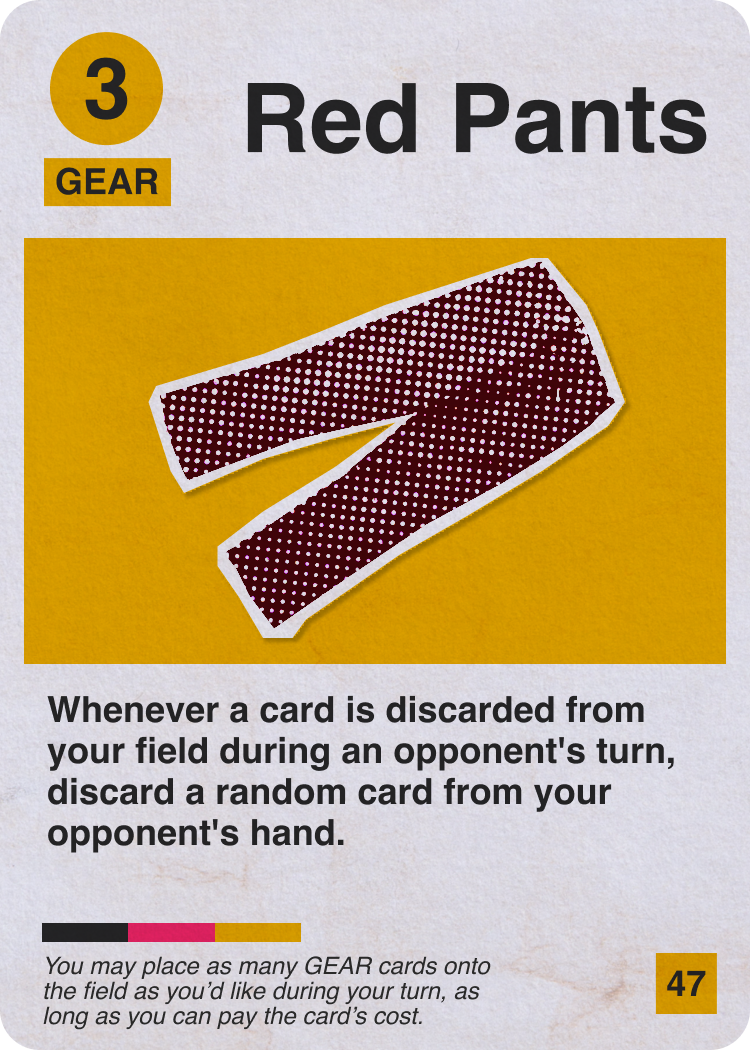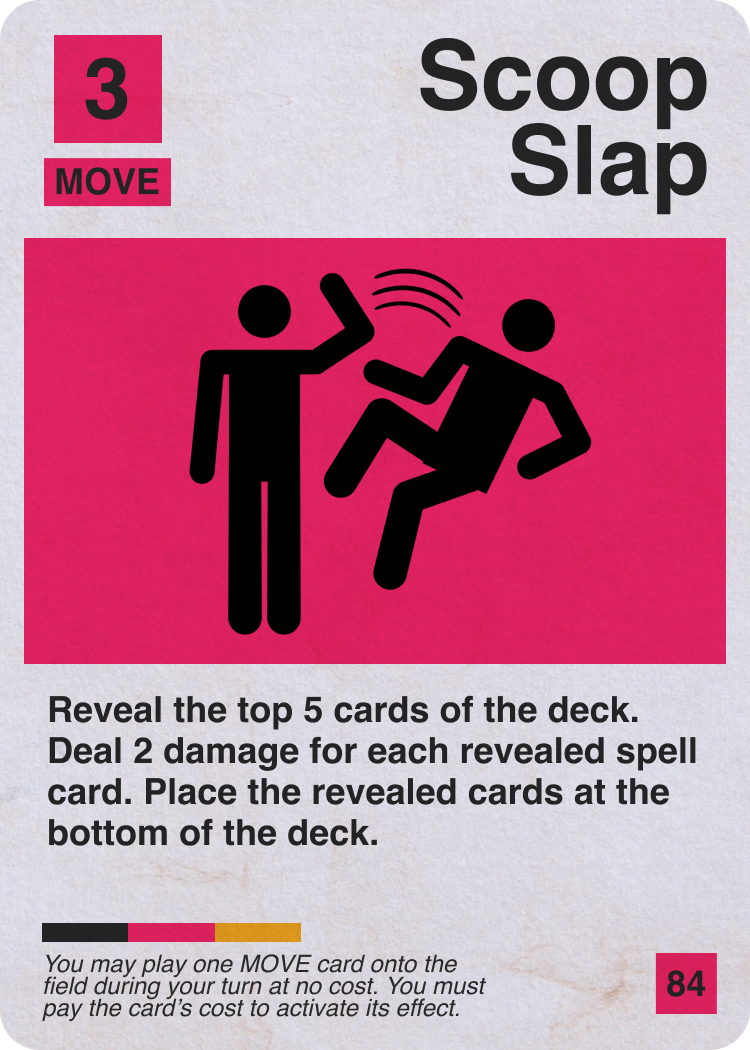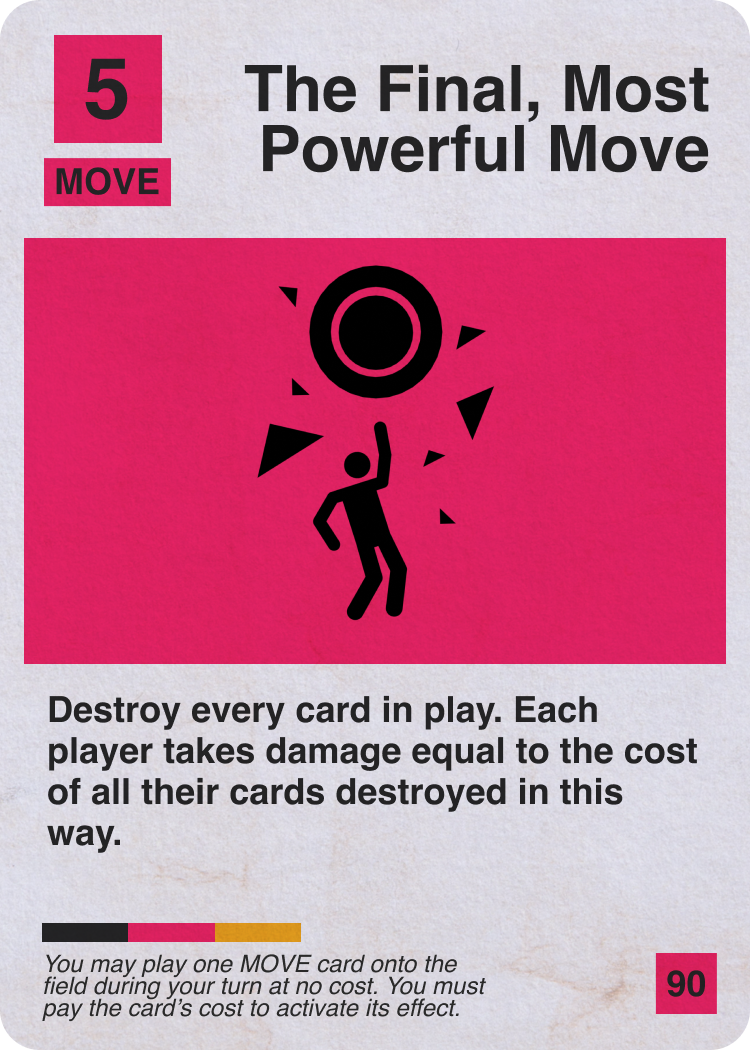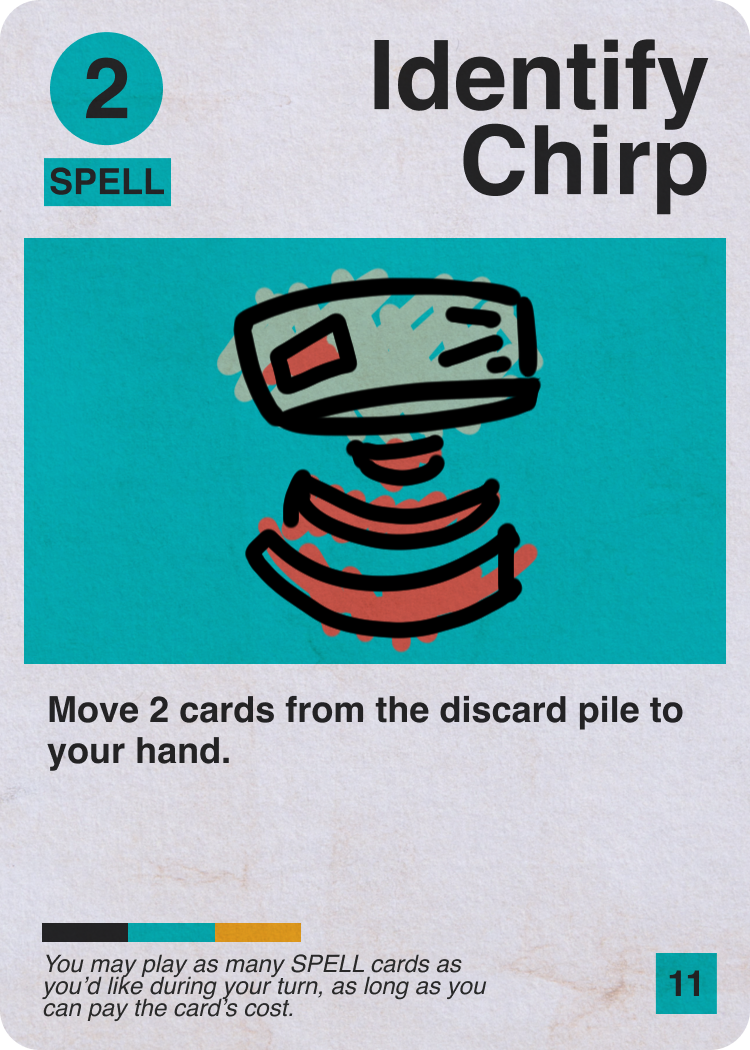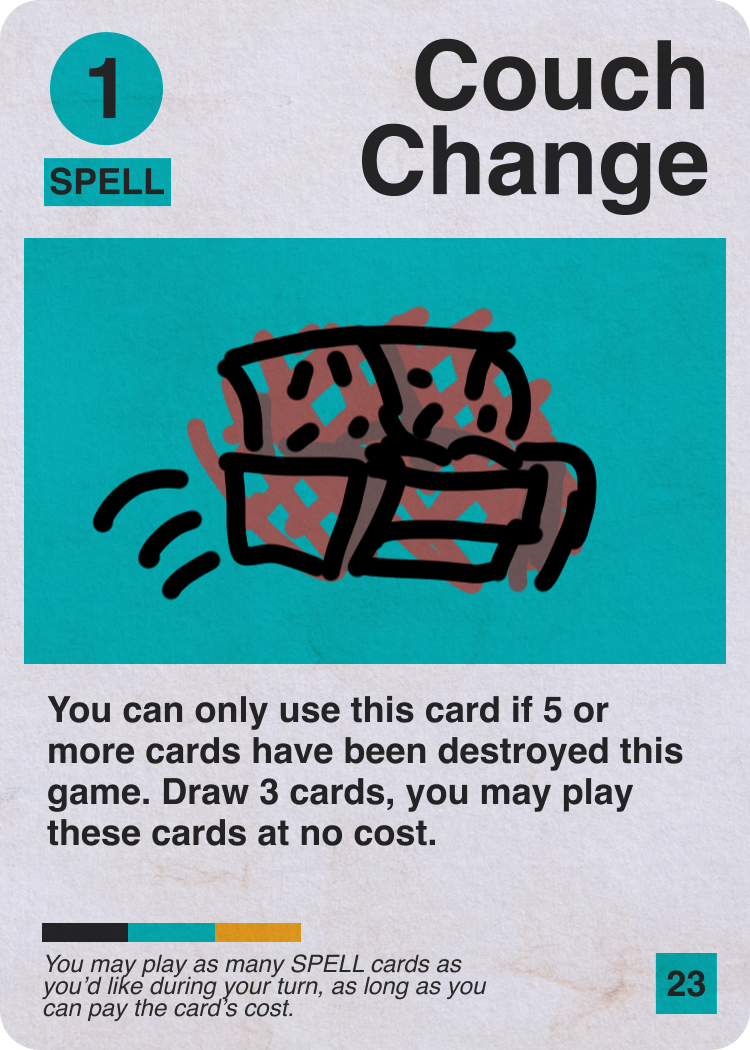
GOONS:
The Trading Card Game
First…
an extensive backstory.
I have been a big fan of board games since I was little. I met a non-zero amount of my friends in high school through gaming, whether that be Dungeons and Dragons or whatever card game someone insisted everybody else had to learn.
Over the years I’ve played and enjoyed a wide variety of games, and have always been fascinated with the design process for something whose purpose is to be fun.
Once in college I started getting into trading card games, and would go to local hobby shops on the weekend to see what was new. I would organize with some friends to buy One Piece starter decks to play against each other, as well as occasionally terrorize Dallas Pokémon tournaments with some seriously gross decks. I got dangerously close to playing Magic The Gathering, but somehow managed to never succumb. Needless to say, I was taking in a lot of information about these games.
in 2023, while messing around with some of the custom asset options in Tabletop Simulator, I realized that it would be exceedingly easy to import cards and make my friends play using them. I decided I needed a game to go with these cards and put together an extremely early version of what would eventually become GOONS.
Rough prototype testing.
This version of the game kind of sucked. So I shelved it. There’s actually barely anything in here that made it to the final version except for the characters and item names.
Eventually the game was resurrected for my final capstone project, I thought this was my best shot at finishing the game, since it wouldn’t be digging into my classes. I planned out my production schedule and got to work, starting with completely remaking the rules.
References and Inspirations
Some inspirations for card effects, layout and design.
Left to Right; Pokémon, One Piece, Munchkin, Balatro.
On my second attempt to make the game, I wanted to make sure that I had a proper pool of references to… well, reference as I was working on the game. I scrutinized some modern TCGs and how they laid out their information, while also taking a look at some more traditional board games, and even some video games to make sure I wasn’t reinventing the wheel.
One Piece’s Leader-based design and energy costs for playing cards (which came from Magic) were some of the biggest influences on this new version of the game.
The second edition of the game was focused around 3 “Leader” cards rather than similar games’ 1, with each leader modifying a certain aspect of play (Attack, Draw and Power). Balatro’s jokers inspired GOON’s “Modifier” cards, which add additional rules to the game as it is played and are where the bulk of the game’s player interactions come from.
Although there are many more examples I could point out as inspirations, I’d rather not lose anyone to minutiae.
Card Layouts
I considered the layout of the actual cards to be extremely important, and spent a lot of time re-iterating on the positioning and color choices. Originally looking at some of Saul Bass’ work, I pivoted to Massimo Vignelli once I found that Saul’s funk worked great for posters, but started to creak and groan when used as a template for a variable amount of text.
Some of that Bass chunkiness can still be seen in the cards with the big colorful blots of color thrown in amongst dark gray and off-whites.
Similarly to leader cards, modifier cards had lots of spit and shine put into them, but unlike leader cards, these cards would be constantly in motion, and I needed to make sure that they were easily legible when fanned, played, or crushed up into a ball. Although I had plenty of experience on the receiving end of similar designs, I based a significant amount of the card layouts (and effects) on Mark Rosewater’s (MTG) “20 Lessons”.
Illustrations
As with any good trading card game, these cards needed some pretty pictures to fill them in. I decided to slowly work away at these in between working on other elements. The original plan was to have these illustrations done after 2 weeks, and I am not going to disclose how long these actually took.
Modifier cards were each approached completely differently. With GEAR cards using stock imagery, MOVE cards using road sign iconography (done in Blender, those lil’ dudes are 3D), and SPELL cards using digital illustrations again.
I reached out to some friends who were willing to be guest illustrators, although I’m not going into detail here, all the guest artists were perfectly pleasant to work with.
(Except for one, you know who you are.)
Supplements
As part of the vertical slice nature of the project, I decided to account for supplemental materials that would be needed for a game like this. These include a logo, box, manual and a short promotional trailer. These were nice breaks from the sometimes-repetitive nature of making over 100 cards.
These materials required me to dive into image editing, 3D modeling, video editing and an overall wide spread of skills to string it all together.
I am very happy with the results.
Meet the GOONS
Modifier Cards
Want to try?
Want to play the game yourself? Included here are links to download printable PDFs, as well as the individual files for all of the cards. Have fun.

































